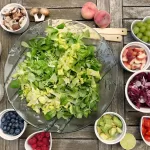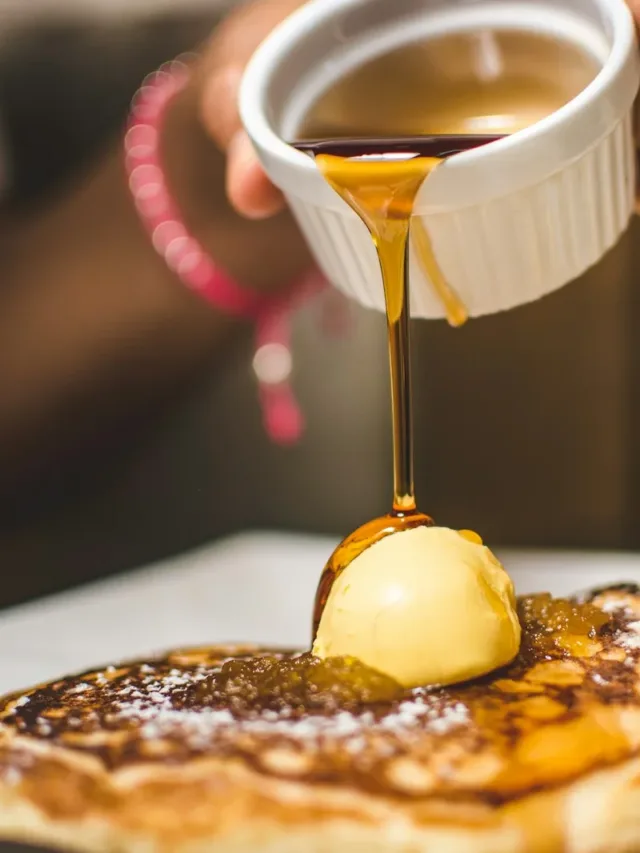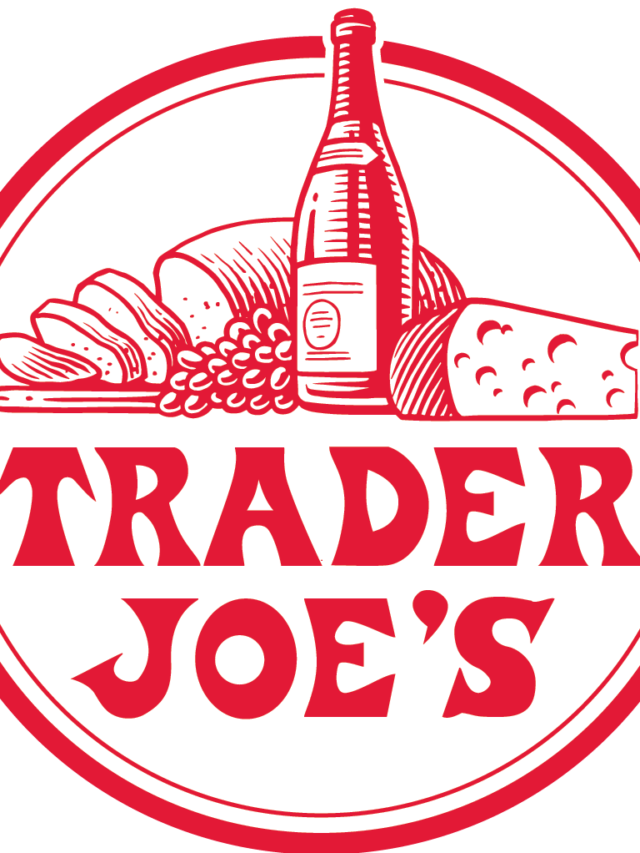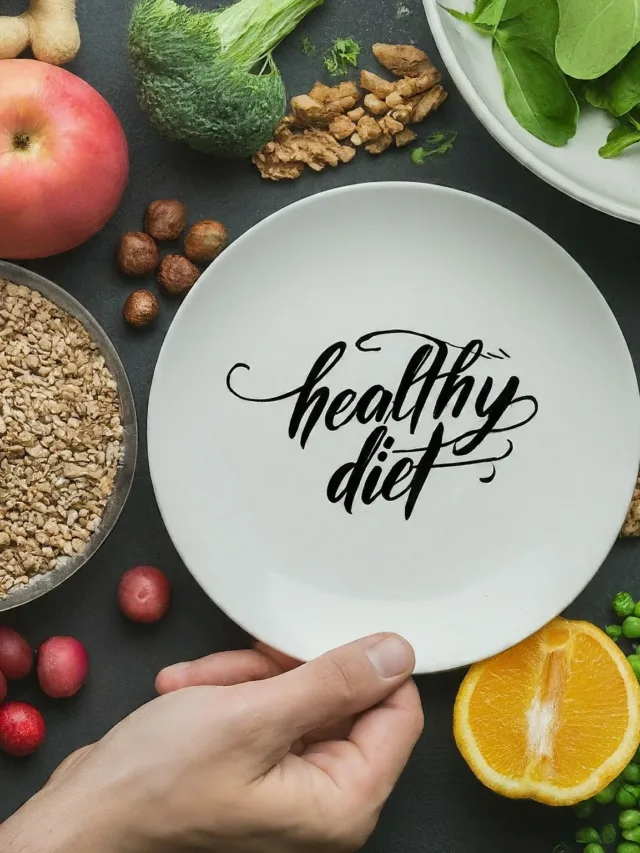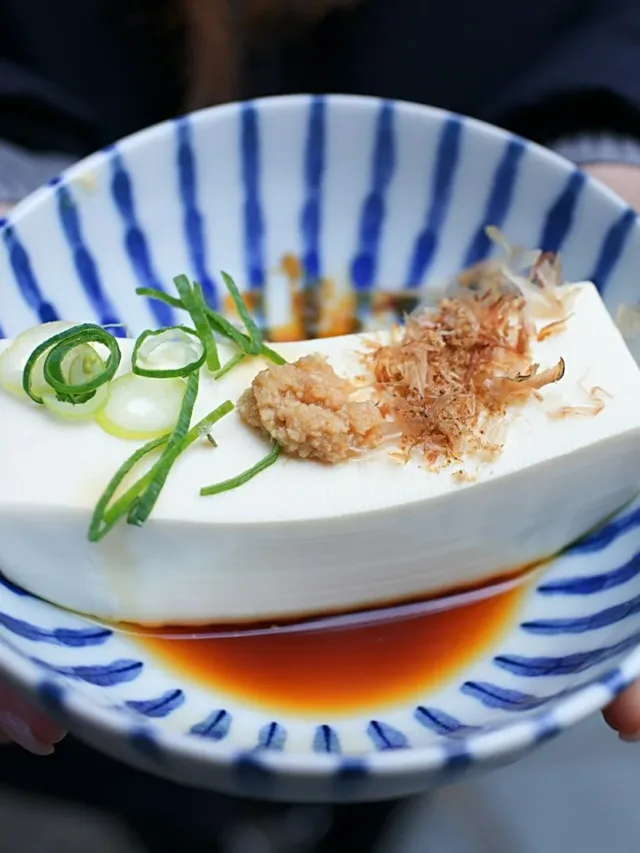A Detailed guide to various Diet types for a Healthy Living
You might be wondering what diet types I could use and why I should even look to make changes to my diet. But if any of these reasons fits, then you should definitely read on –
- To find what works best for individual’s body and health goals
- To get variety of nutrients and prevent boredom with food choices
- To potentially improve overall health and manage medical conditions
- To discover personal preferences and improve sustainability of diet changes.
Now, that you know the whys, here’s a complete breakup of some popular diets that you could follow for a healthier Living:
KETO DIET
The ketogenic diet (keto) is a low-carb, high-fat diet that aims to change the body’s metabolic state into ketosis, where it burns fat for fuel instead of carbohydrates. It typically includes foods high in healthy fats (such as nuts, oils, avocado, and fatty fish), moderate protein, and low in carbohydrates. The goal is to achieve a state of ketosis, where the body is burning fat for fuel, leading to weight loss and other potential health benefits such as improved energy levels, mental clarity and lower risk for certain diseases. It’s important to note that the diet should be followed under medical supervision, as it can have side effects and may not be suitable for everyone.
Now that you have a brief overview of the diet, here are a few general recipes for Keto Diet to get you started.
- Avocado Egg Boats:
- Slice an avocado in half and remove the pit.
- Scoop out some of the avocado to make room for the egg.
- Crack an egg into each avocado half.
- Bake in the oven at 425°F for 15-20 minutes or until the egg is set.
- Baked Salmon with Lemon Butter:
- Season salmon fillets with salt and pepper.
- Place on a baking sheet and top each fillet with 1 tablespoon of butter and 1 lemon slice.
- Bake in the oven at 400°F for 12-15 minutes or until the salmon is cooked through.
- Zucchini Noodles with Pesto:
- Use a spiralizer to make zucchini noodles.
- Toss with store-bought or homemade pesto sauce.
- Serve immediately.
- Coconut Flour Pancakes:
- In a large bowl, whisk together 3 eggs, 1/2 cup almond milk, 1/4 cup coconut flour, 1 teaspoon baking powder, and 1/4 teaspoon salt.
- Heat a non-stick pan over medium heat and add 1/4 cup of batter for each pancake.
- Cook for 2-3 minutes on each side or until golden brown.
- Cheesy Broccoli Stuffed Chicken Breast:
- Pound 4 boneless, skinless chicken breasts to even thickness.
- Mix together 1 cup steamed broccoli florets, 1/2 cup shredded cheddar cheese, and 2 tablespoons of cream cheese.
- Place the mixture on top of each chicken breast and roll up.
- Bake in the oven at 400°F for 25-30 minutes or until the chicken is cooked through.
Well, these recipes are all good but I can’t end this list without adding any Indian Keto Recipes right! Here is a guide for some Indian Keto Dishes.
- Keto Butter Chicken:
- In a large pan, heat 2 tablespoons of ghee or oil and sauté 1 chopped onion until softened.
- Add 2 minced garlic cloves and 1 tablespoon of grated ginger and cook for another minute.
- Stir in 1 can of crushed tomatoes, 1 teaspoon of garam masala, 1 teaspoon of turmeric, 1 teaspoon of paprika, and salt to taste. Cook for 5 minutes.
- Add 1 pound of boneless, skinless chicken breasts, cut into bite-sized pieces, and cook until browned.
- Stir in 1/2 cup of heavy cream and 1/4 cup of chopped fresh cilantro. Serve with cauliflower rice.
- Cauliflower Rice Biryani:
- In a large pan, heat 2 tablespoons of ghee or oil and sauté 1 chopped onion until softened.
- Add 1 teaspoon of cumin seeds, 1 teaspoon of coriander powder, 1 teaspoon of turmeric, and 1/2 teaspoon of cayenne pepper. Cook for another minute.
- Stir in 2 cups of riced cauliflower and cook for 5 minutes.
- Stir in 1 cup of diced vegetables of your choice (such as carrots, bell peppers, and peas).
- Serve topped with chopped fresh cilantro and a dollop of plain Greek yogurt.
- Indian-style Omelette with Spices:
- In a small bowl, whisk together 3 eggs and 1/4 cup of heavy cream.
- In a medium pan, heat 1 tablespoon of ghee or oil and sauté 1 chopped onion until softened.
- Stir in 1 teaspoon of cumin seeds, 1/2 teaspoon of coriander powder, 1/2 teaspoon of turmeric, and salt to taste. Cook for another minute.
- Pour the egg mixture into the pan and sprinkle with 1/2 cup of shredded cheese. Cook until the eggs are set and the cheese is melted.
- Serve topped with chopped fresh cilantro and a dollop of plain Greek yogurt.
That is about it on the Keto diet recipes, for more recipes you could search for them online, but there are a few more things about Keto diet that you should know like its origins and applicability to your lifestyle.
The history of the ketogenic diet can be traced back to the 1920s, when it was first used as a therapeutic treatment for epilepsy in children. It was discovered that a high-fat, low-carbohydrate diet could help reduce the frequency and severity of seizures in children with epilepsy who did not respond to other treatments. The diet works by inducing a metabolic state called ketosis, in which the body starts to burn fat for fuel instead of carbohydrates.
Over the years, the ketogenic diet has been used for a variety of health conditions, including diabetes, obesity, and cancer. However, it was not until the late 1990s and early 2000s that the diet started to gain popularity as a weight loss tool. In the past decade, the ketogenic diet has become one of the most popular diets, with numerous books, blogs, and websites dedicated to the diet and its benefits.
It’s important to note that while the ketogenic diet has been shown to be effective for some health conditions and may lead to weight loss, it is not a one-size-fits-all approach, and it should be used under the guidance of a healthcare professional.
PALEO DIET
The paleo diet, also known as the “caveman diet,” is a dietary pattern that is based on the idea of eating like our ancestors did during the Paleolithic era, over 10,000 years ago. The paleo diet emphasizes whole, unprocessed foods, including meat, fish, eggs, fruits, vegetables, nuts, and seeds, while excluding processed foods, dairy products, legumes, and grains.
The main premise of the paleo diet is that our bodies have not evolved to properly digest modern, highly processed foods and that by eating a diet that is similar to what our ancestors ate, we can improve our health and prevent chronic diseases. Proponents of the paleo diet argue that modern diets high in refined sugars, grains, and processed foods contribute to the rise in chronic diseases, such as obesity, type 2 diabetes, and cardiovascular disease.
The paleo diet has gained popularity in recent years as a way to improve health and lose weight, but it remains a controversial and somewhat divisive dietary approach. While there is some evidence to support the health benefits of a diet that is high in whole, unprocessed foods and low in processed foods, more research is needed to fully understand the long-term effects of the paleo diet.
As with any dietary approach, it’s important to work with a healthcare professional to determine if the paleo diet is appropriate for you and to ensure that you are getting all of the nutrients that you need.
Mediterranean Diet: A diet rich in fruits, vegetables, whole grains, and healthy fats, inspired by the dietary habits of Mediterranean countries.
Vegan Diet: Plant-based diet that eliminates all animal products, including meat, dairy, and eggs.
Whole30: A month-long elimination diet that removes certain food groups like sugar, alcohol, grains, legumes, and dairy to promote whole foods and healthy habits.
A lot of Indian dishes can easily be added to your daily meal as long as you avoid any processed food. None the less, here is a list of some popular India dishes for Paleo Diet.
- Tandoori chicken: Marinate chicken in a mixture of yogurt, lemon juice, spices, and ginger and bake in a high-heat oven for a crispy and flavorful dish.
- Aloo gobi: Roast cubed sweet potatoes and cauliflower with spices, ginger, and garlic for a healthy and tasty side dish.
- Butter chicken: Make a rich and creamy tomato-based sauce with chicken and spices, then serve with vegetables or a side of roasted sweet potatoes.
- Palak paneer: Sauté spinach and onions, then blend with spices to make a flavorful sauce for pan-fried paneer cheese.
Here are some sweet paleo-friendly dessert recipes for your taste buds:
- Berry crumble: Mix fresh berries with almond flour, coconut sugar, and cinnamon, then bake until crispy and delicious.
- Chia seed pudding: Combine chia seeds, almond milk, vanilla, and sweetener of choice, then let sit in the refrigerator until thick and creamy.
- Almond flour pancakes: Whisk together almond flour, eggs, coconut milk, and baking powder for a quick and easy paleo-friendly breakfast.
- Banana bread: Mix mashed bananas, almond flour, eggs, and spices to make a sweet and healthy banana bread that’s perfect for snacking.
- Sweet potato brownies: Mix mashed sweet potatoes with almond flour, cocoa powder, and sweetener of choice for a rich and chocolaty paleo dessert.
These are just a few examples of the many Indian-style paleo recipes that can be easily adapted to fit the dietary restrictions of the paleo diet. By using fresh, whole ingredients and avoiding processed foods, it is possible to create delicious and healthy paleo-friendly meals that are inspired by traditional Indian cuisine.
ATKINS DIET
The Atkins diet is a low-carbohydrate diet that was first popularized in the 1970s by Dr. Robert Atkins. The diet is designed to help people lose weight by restricting carbohydrates and encouraging the consumption of healthy fats and proteins.
The Atkins diet is divided into four phases: induction, ongoing weight loss, pre-maintenance, and maintenance. During the induction phase, which typically lasts two weeks, carbohydrates are restricted to a very low level in order to kick-start weight loss. In the subsequent phases, carbohydrates are gradually reintroduced until a balanced diet is achieved.
The diet emphasizes the consumption of high-protein foods, such as meat, fish, poultry, and eggs, as well as low-carbohydrate vegetables, such as leafy greens, broccoli, and cauliflower. Processed foods, sugars, and grains are restricted.
The Atkins diet has been the subject of much controversy over the years, with some experts questioning its long-term safety and effectiveness. Some studies have shown that diet can lead to short-term weight loss, but the evidence for its long-term benefits is less clear.
By focusing on high-protein, low-carb ingredients and avoiding processed foods, it is possible to create meals that fit within the guidelines of the diet and promote weight loss. Still, if you are looking for a healthy weight loss plan and the Atkins Diet suits your needs, then here are a few recipes that adhere to Atkins Diet to get you started.
- Cheeseburger salad: Top a bed of greens with a grilled hamburger patty, sliced cheese, diced tomatoes, and a creamy dressing made with mayonnaise and mustard.
- Avocado egg boats: Halve an avocado and remove the pit, then fill the cavity with a fried egg and bacon bits.
- Chicken parmesan casserole: Layer chicken breasts, tomato sauce, and mozzarella cheese in a baking dish, then top with breadcrumbs made from almond flour and parmesan cheese.
- Shrimp scampi: Sauté shrimp in garlic, butter, and white wine, then serve over a bed of zucchini noodles.
- BLT lettuce wraps: Fill lettuce leaves with crispy bacon, sliced tomato, and mayonnaise for a low-carb version of a classic sandwich.
- Chicken tikka masala: Marinate chicken breasts in yogurt, spices, and lemon juice, then grill or bake and serve in a rich tomato and cream sauce.
- Vegetable biryani: Layer seasoned vegetables, such as cauliflower, carrots, and bell peppers, with basmati rice and cook until fragrant and tender.
- Butter chicken: Simmer chicken pieces in a creamy tomato sauce seasoned with garam masala, coriander, and cumin.
- Aloo gobi: Sauté potatoes and cauliflower in spices and serve with a side of high-protein naan or roti made from almond flour.
- Tandoori chicken: Marinate chicken in yogurt and spices, then grill or bake until juicy and flavorful.
As with any dietary approach, it’s important to work with a healthcare professional to determine if the Atkins diet is appropriate for you and to ensure that you are getting all of the nutrients that you need. Additionally, it’s important to remember that a balanced diet that includes a variety of nutrient-dense foods is generally considered the best approach for achieving and maintaining good health.
INTERMITTENT FASTING
Intermittent fasting is an eating pattern where periods of fasting and eating are alternated. It has gained popularity as a weight loss and health improvement strategy. There are several different types of intermittent fasting, including:
Time-restricted eating: During this type of intermittent fasting, you only eat during a specific window of time each day, such as 12 hours, and fast for the remaining 12 hours.
Here’s an example of a time-restricted eating schedule based on a 12-hour eating window:
Fasting period: 12 hours. During this time, only water, black coffee, or other non-caloric beverages are consumed.
Eating period: 12 hours. During this time, you eat three balanced meals and a snack if desired, making sure to include protein, healthy fats, and fiber-rich carbohydrates.
Example schedule:
- 7:00 AM: Start of eating period. Eat breakfast.
- 10:00 AM: Eat a snack.
- 12:00 PM: Eat lunch.
- 3:00 PM: Eat a snack.
- 6:00 PM: Eat dinner.
- 7:00 PM: End of eating period. Begin fasting period.
Note: This schedule is just an example and may be adjusted to suit individual needs and preferences. It’s important to listen to your body and adjust the timing and length of your fasting and eating periods as needed.
Alternate-day fasting: As the name suggests, this involves fasting for one day and eating normally the next.
The 5:2 diet: This involves eating normally for five days of the week and limiting calorie intake to 500-600 calories on the other two days. Here’s an example of a 5:2 diet plan:
- Five days of the week: Eat normally, following a balanced diet that includes protein, healthy fats, and fiber-rich carbohydrates.
- Two days of the week: Limit calorie intake to 500-600 calories. On these days, focus on eating nutrient-dense, low-calorie foods such as leafy greens, non-starchy vegetables, and lean protein sources.
Example schedule:
- Monday-Friday: Eat normally.
- Saturday: Limit calorie intake to 500-600 calories. Eat a light breakfast, a salad for lunch, and a small dinner.
- Sunday: Limit calorie intake to 500-600 calories. Eat a light breakfast, a salad for lunch, and a small dinner.
The 16/8 method: This involves fasting for 16 hours and eating during an eight-hour window.
Here’s an example of an intermittent fasting schedule based on the 16/8 method:
- Fasting period: 16 hours. During this time, only water, black coffee, or other non-caloric beverages are consumed.
- Eating period: 8 hours. During this time, you eat three balanced meals and a snack if desired, making sure to include protein, healthy fats, and fiber-rich carbohydrates.
Example schedule:
- 8:00 AM: Start of eating period. Eat breakfast.
- 12:00 PM: Eat lunch.
- 4:00 PM: Eat dinner.
- 8:00 PM: End of eating period. Begin fasting period.
Note: This schedule is just an example and may be adjusted to suit individual needs and preferences. It’s important to listen to your body and adjust the timing and length of your fasting and eating periods as needed.
Intermittent fasting has been shown to have a number of potential health benefits, including weight loss, improved insulin sensitivity, and reduced oxidative stress. However, more research is needed to fully understand its effects and to determine the best methods for using it.
MEDITERRANEAN DIET
The Mediterranean diet is a dietary pattern inspired by the traditional eating habits of people living in the Mediterranean region, particularly in Greece, southern Italy, and Spain. It emphasizes:
- Whole, minimally processed foods: Fresh fruits and vegetables, whole grains, legumes, nuts, and seeds.
- Olive oil: As the primary source of added fat.
- Fish and seafood: Consumed in moderate amounts.
- Poultry and eggs: Consumed in moderation.
- Cheese and yogurt: Consumed in moderate amounts, preferably low-fat options.
- Red meat: Consumed infrequently, if at all.
- Wine: Consumed in moderation, preferably with meals.
- Herbs and spices: Used to add flavor and aroma to dishes.
The Mediterranean diet also promotes a healthy lifestyle, including regular physical activity and socializing with friends and family while eating.
here are some simple Mediterranean diet recipes:
- Greek Salad: Mix chopped tomatoes, cucumbers, red onion, feta cheese, and Kalamata olives with a dressing of olive oil, red wine vinegar, and herbs like oregano and basil.
- Grilled Sardines: Marinate sardines in olive oil, lemon juice, garlic, and herbs, then grill for a few minutes until cooked through. Serve with a salad of mixed greens, tomatoes, and cucumbers.
- Stuffed Bell Peppers: Cut the tops off of bell peppers, remove the seeds and membranes, then fill with a mixture of cooked brown rice, diced tomatoes, chopped onion, and herbs. Bake for 25-30 minutes at 350°F.
- Ratatouille: Sauté diced eggplant, zucchini, onions, bell peppers, and garlic in olive oil, then add canned tomatoes and herbs like thyme and basil. Simmer until the vegetables are tender. Serve with grilled fish or chicken.
- Chickpea and Spinach Salad: Mix cooked chickpeas, chopped spinach, diced tomatoes, red onion, and kalamata olives with a dressing of olive oil, lemon juice, and herbs like parsley and mint.
These are just a few examples of the many delicious and healthy Mediterranean diet recipes you can try. Experiment with different ingredients and spices to find your favorites.
It’s important to note that the Mediterranean diet is not a strict set of rules, but rather a flexible approach to eating that can be adapted to fit individual preferences and cultural traditions.
GLUTEN FREE DIET
A gluten-free diet is a type of diet that excludes gluten, a protein found in wheat, barley, and rye. People with celiac disease, non-celiac gluten sensitivity, and wheat allergy must follow a gluten-free diet to manage their symptoms and prevent damage to their bodies.
In a gluten-free diet, gluten-containing grains like wheat, barley, and rye are replaced with gluten-free alternatives like rice, corn, quinoa, and potatoes. Additionally, people on a gluten-free diet should avoid processed foods that contain gluten as an ingredient, such as bread, pasta, baked goods, and many processed snack foods.
You can easily prepare dishes by substituting the flour of the gluten containing grains with alternate ones. Here are some Indian-inspired gluten-free recipes:
- Gluten-Free Almond Flour Naan: Make a traditional naan bread using almond flour and a mixture of gluten-free flours. Serve with your favorite Indian curries or dips.
- Gluten-Free Samosas: Use a gluten-free flour blend to make the dough for these popular Indian snacks. Fill with a mixture of spices, vegetables, or meat and fry until crispy.
- Gluten-Free Masala Dosas: Make dosas using a gluten-free rice flour and lentil flour batter. Serve with chutneys and sambar for a delicious gluten-free Indian meal.
- Gluten-Free Butter Chicken: Make a classic Indian butter chicken using gluten-free ingredients and serve with rice or naan for a satisfying gluten-free meal.
- Gluten-Free Vegetable Biryani: Make a traditional Indian biryani using gluten-free basmati rice and a mixture of vegetables and spices for a flavorful and gluten-free dish.
It’s important to note that simply avoiding gluten-containing grains is not enough to ensure a healthy, balanced diet. People following a gluten-free diet should make sure to get adequate amounts of fiber, vitamins, and minerals from other sources, such as fruits, vegetables, legumes, nuts, and gluten-free whole grains.
DASH DIET
The DASH diet (Dietary Approaches to Stop Hypertension) is a heart-healthy diet that’s been shown to lower blood pressure and reduce the risk of cardiovascular disease. The diet is based on a variety of foods that are rich in nutrients that are known to have a positive impact on blood pressure, such as potassium, magnesium, and calcium.
The DASH diet emphasizes eating plenty of fruits and vegetables, low-fat dairy products, whole grains, poultry, fish, and nuts. It also includes limited amounts of red meat, sweets, and added sugars. The diet is low in sodium and high in potassium, magnesium, and calcium.
The DASH diet is a balanced, flexible eating plan that can be adapted to meet individual needs and preferences. It’s been consistently rated as one of the best diets for overall health by numerous organizations, including U.S. News & World Report, and has been endorsed by the American Heart Association.
Here are some Indian-inspired recipes that align with the principles of the DASH diet:
- Vegetable Pulao: Cook a variety of vegetables, such as carrots, peas, and bell peppers, with basmati rice and spices to make a healthy and flavorful pulao dish.
- Chickpea Curry: Cook chickpeas with a mixture of spices, such as cumin, coriander, and turmeric, to make a low-fat and high-protein curry that’s packed with nutrients.
- Lentil Soup: Cook a variety of lentils, such as moong or chana dal, with spices and vegetables to make a flavorful and nutritious soup that’s low in fat and high in fiber.
- Tandoori Chicken: Marinate chicken breasts in a mixture of yogurt and spices, such as turmeric, paprika, and garam masala, and then bake in the oven until cooked through for a low-fat and flavorful meal.
- Eggplant and Tomato Curry: Cook eggplant and tomatoes with spices, such as cumin, coriander, and garam masala, to make a low-fat and flavorful curry that’s packed with nutrients.
These dishes are high in fiber, low in saturated fat, and rich in potassium, magnesium, and calcium, making them great options for people following the DASH diet.
ALKALINE DIET
The alkaline diet is a dietary approach that emphasizes eating foods that are believed to have an alkalizing effect on the body, with the aim of reducing acidity levels and promoting overall health. Proponents of the alkaline diet believe that eating a diet rich in alkaline-forming foods can help balance the body’s pH levels, reduce inflammation, and improve health.
Foods that are considered alkaline-forming include most fruits, vegetables, legumes, nuts, and seeds. Foods that are considered acid-forming include meat, dairy, sugar, and processed foods.
The theory behind the alkaline diet is based on the idea that the body needs to maintain a balanced pH level to function optimally, and that consuming a diet high in acid-forming foods can disrupt this balance and lead to health problems.
Here are some simple and delicious alkaline diet recipes:
- Alkaline Green Smoothie: Blend kale, spinach, cucumber, celery, lemon, and almond milk for a nutrient-packed breakfast or snack.
- Alkaline Pasta: Cook zucchini noodles or spaghetti squash and toss with marinara sauce, basil, and cherry tomatoes.
- Alkaline Salad: Top mixed greens with sliced avocado, cherry tomatoes, red onion, and a dressing made from olive oil, lemon juice, and herbs.
- Alkaline Stir-Fry: Sauté sliced chicken or tofu with vegetables like bell peppers, broccoli, and bok choy in a sauce made from coconut aminos, ginger, and garlic.
- Alkaline Burger: Serve a grilled portobello mushroom or veggie burger on an alkaline-friendly bun made from almond flour, topped with avocado and salsa.
The origins of the alkaline diet can be traced back to the early 20th century, when the concept of acid-base balance was first introduced in biochemistry and medicine. However, it wasn’t until the early 2000s that the alkaline diet gained popularity as a health and wellness trend.
Since then, the alkaline diet has been adopted by many people as a way to improve their health and prevent chronic diseases. While the scientific evidence supporting the claims of the alkaline diet is limited, many people report positive results, such as increased energy levels, improved digestion, and better overall health.
However, it is important to note that the alkaline diet is not without controversy, and many experts question its validity and recommend a balanced, whole-foods diet as the best approach for maintaining optimal health.
ZONE DIET
The Zone diet is a dietary program that was popularized in the mid-1990s by Dr. Barry Sears, a biochemist and nutrition expert. It’s based on the idea that controlling the balance of macronutrients (carbohydrates, proteins, and fats) in the diet can help regulate insulin levels, reduce inflammation, and improve overall health.
The Zone diet involves dividing each meal into specific proportions of macronutrients, with the goal of consuming 40% of calories from carbohydrates, 30% from protein, and 30% from fat. The diet also emphasizes eating low-glycemic index (GI) carbohydrates, lean protein sources, and monounsaturated fats.
Additionally, the Zone diet encourages eating five or six small meals throughout the day, rather than three large meals, to help maintain a consistent balance of macronutrients and blood sugar levels.
here are some Indian recipes that can fit into a Zone diet meal plan:
- Tandoori chicken with mixed vegetables – Grilled chicken marinated in a mixture of yogurt, spices, and lemon juice, served with a side of mixed vegetables like bell peppers, onions, and carrots.
- Chana masala – A flavorful dish made with chickpeas, tomatoes, and a blend of Indian spices. Serve it with a serving of brown rice to balance the macronutrient ratios.
- Spinach and paneer curry – A creamy curry made with paneer (Indian cheese) and spinach, simmered in a tomato-based sauce with spices. Serve it with a side of quinoa or brown rice.
- Chicken tikka kebabs – Marinated chicken breast pieces grilled or baked and served with a side of mixed vegetables.
- Lentil soup – A hearty and filling soup made with lentils, vegetables, and spices.
Remember, the Zone diet requires that each meal should consist of 40% carbohydrates, 30% protein, and 30% fat, so be mindful of the portions and ingredients used in each recipe to fit within these guidelines.
It is believed that Zone diet can lead to weight loss, improved energy levels, better athletic performance, and reduced risk of chronic diseases, such as heart disease, diabetes, and cancer.
However, the scientific evidence supporting these claims is limited, and many health experts question the validity of the Zone diet. As with any diet, it’s important to speak with a healthcare provider before making any significant changes to your eating habits.
Apart from these diet plans there are many other plans that you could take an inspiration from like –
- Vegetarian and vegan diets: These diets focus on plant-based foods and exclude animal products.
- Whole food plant-based diet: This diet emphasizes whole, minimally processed foods and eliminates or minimizes animal products, added sugars, and processed foods.
- Low-carb diets: These diets restrict carbohydrate intake and emphasize protein and healthy fats.
- Low-fat diets: These diets restrict fat intake and emphasize carbohydrates and protein.
But, no matter which diet type you incorporate in your eating habits, ensure that the said diet is suitable to your body type, as these diets can be easy to rigorous on your body. Always, consult your health care professional before you make any major changes to your diet plan especially if you have an ongoing medical condition.
